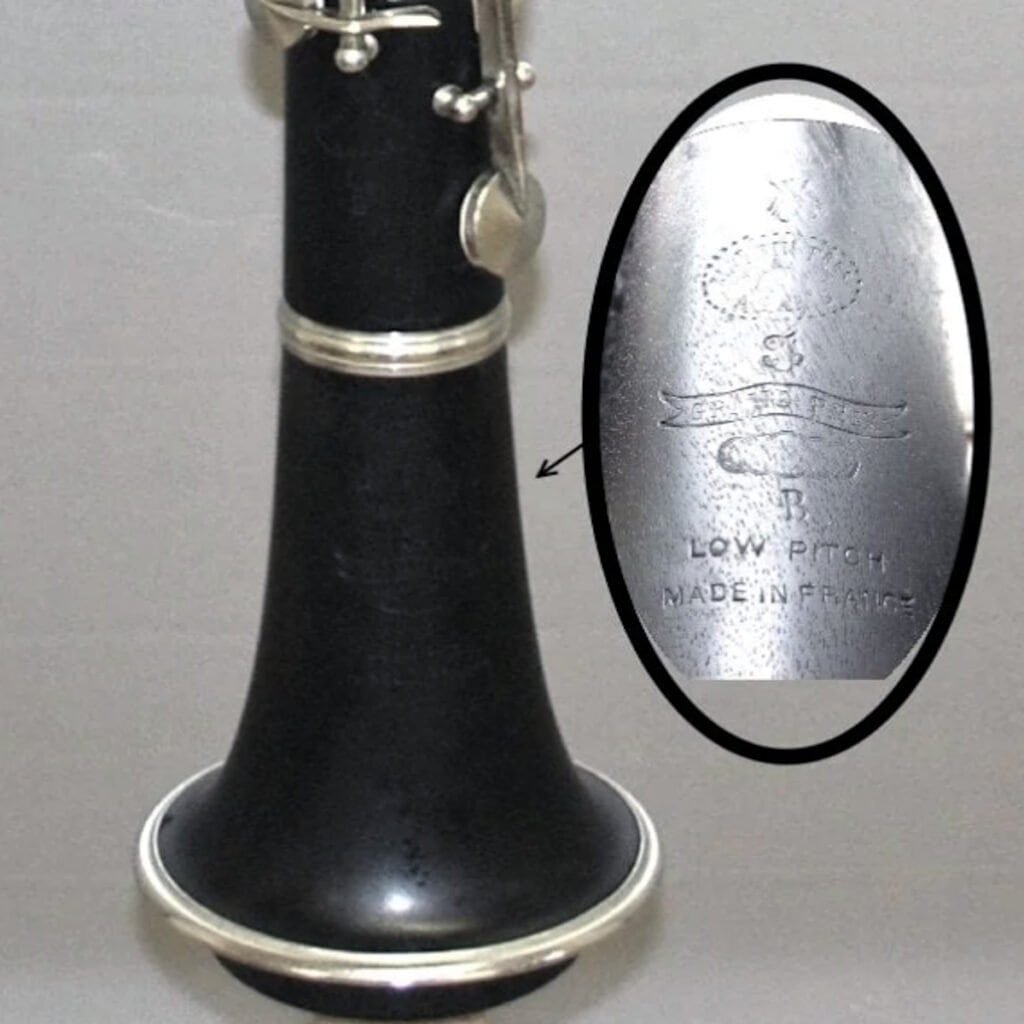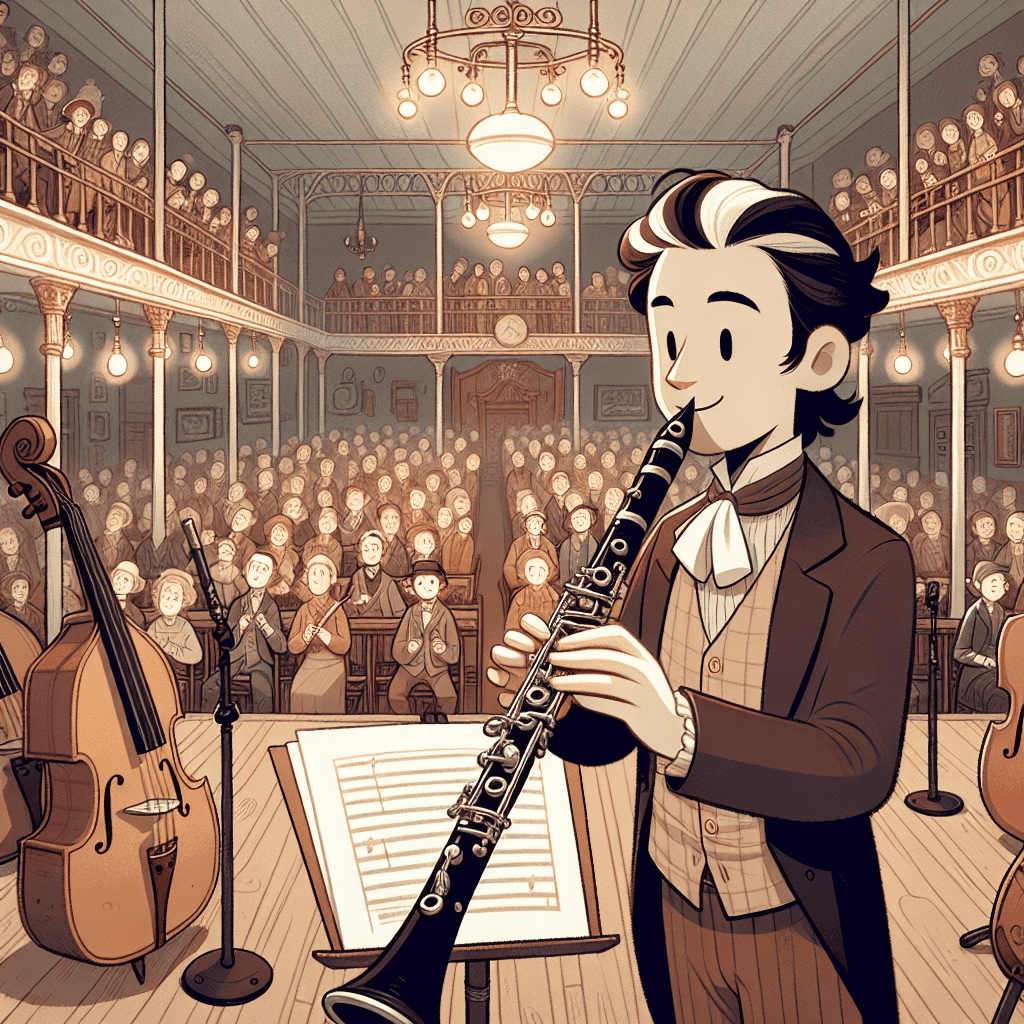The Grand Prix Clarinet by Martin Freres is a rare and historically significant woodwind instrument, produced circa 1906–1914. This model was introduced as a limited edition clarinet, commemorating both the Grand Prix motor races in France and the award-winning craftsmanship of Martin Freres at international expositions. Designed for serious musicians and professionals, the Grand Prix Clarinet exemplifies the company’s dedication to precision, tonal excellence, and superior materials.
Produced in both Bb and C, the Grand Prix model offered a choice between the standard orchestral pitch (Bb) and the brighter C clarinet, favored in chamber music, military bands, and certain solo settings. With high-quality grenadilla wood, Boehm keywork or Albert keywork, the Grand Prix Clarinet represents an important milestone in early 20th-century clarinet craftsmanship.
Extensive historical records, verified examples, and photographic evidence confirm its place as one of the most significant clarinets produced by Martin Freres. This essay explores the history, design, features, and modern-day significance of the Grand Prix Clarinet.
The History of the Grand Prix Clarinet
Martin Freres has been a name synonymous with high-quality woodwind instruments since the 19th century. Martin Freres has earned a reputation for superior bore design, precise keywork, and exceptional intonation.
The Grand Prix Clarinet was introduced between 1906 and 1914, aligning with two major events:
- The rise of Grand Prix motor racing in France (1906), which symbolized technological innovation and competition.
- The recognition of Martin Freres at international exhibitions, where the company received the Grand Prix award, most likely at the Paris Exposition Universelle of 1900.
The instrument was designed as a statement of the company’s commitment to innovation and artistry. with production ending in 1914.
Production in Both Bb and C
One of the most distinctive aspects of the Grand Prix Clarinet is that it was manufactured in both the keys of Bb and C.
- The Bb model was the primary version, designed for orchestral, chamber, and solo performance, offering the warm, rich tone expected from a professional-level French clarinet.
- The C model, which is rarer, was used for chamber music, wind ensembles, and military bands, where a brighter, more direct sound was desirable.
Martin Freres has verified multiple examples of both Bb and C Grand Prix Clarinets, confirming that the model was not limited to a single key. Additionally, example are extant in both Boehm and Albert systems.
Design and Features of the Grand Prix Clarinet
The Grand Prix Clarinet was constructed from seasoned grenadilla wood (Dalbergia melanoxylon), a material prized for its acoustic properties, durability, and resistance to cracking. The wood was carefully selected and aged, ensuring longevity and tonal richness.
The keywork was crafted from nickel silver or German silver, materials chosen for their strength, corrosion resistance, and smooth action. Each clarinet was hand-finished and engraved with the Martin Freres name and the signature “BEE” emblem (some call it a fly, but it's a bee).
Musicians have consistently noted the rich, warm tone of the Grand Prix Clarinet, describing:
- A resonant chalumeau register, with deep, well-rounded lower tones.
- A balanced and controlled clarion register, ideal for lyrical passages.
- A stable and focused altissimo range, with excellent projection.
The precision bore design contributed to exceptional tuning stability, making it a preferred instrument for professional musicians of its time.
Surviving Examples
Many Grand Prix Clarinets remain in circulation today, and Martin Freres has verified multiple examples with varying serial numbers, engravings, and key configurations. The existence of both B? and C models in historical archives confirms the model’s production in multiple keys.
Care and Preservation
Due to their historical and artistic value, Grand Prix Clarinets are highly sought after by collectors, restorers, and musicians. Proper maintenance includes:
- Storing in a climate-controlled case to prevent wood expansion or contraction.
- Avoiding sudden temperature changes, which can lead to cracking.
- Professional restoration and pad replacement to ensure optimal playability.
When properly maintained, a Grand Prix Clarinet remains a playable and historically significant instrument.







